Also available in: Deutsch
Twice a day from my little island I see the fast ferry on its three hours journey between the tourist hot spots of Coron and El Nido on Palawan, its passengers gazing out at all the beautiful islands they pass by along the way.
But not all tourists want to stay on the main tourist routes and some like to get away from the hustle to explore the quiet and peaceful places. Why not take the slower ferries and explore some of those beautiful islands in between?
Linapacan – Palawan’s untouched paradise

About the Linapacan archipelago
Linapacan, about half way between these two, is surrounded by 52, mostly deserted, paradise beach islands. The area has amazing clear water and the snorkeling is amazing. There are the million years old Seniora caves, an old Spanish fortress, cliff diving straight into the ocean, and even jungle trails for avid hikers. There are also two shipwrecks, but the local diving services are not yet fully developed.
On the largest island, Linapacan, there are two small towns of about the same size, roughly 2,000 people each, who have not yet been swamped by tourists and are still very enthusiastic and welcoming. San Miguel is the main one where the slower ferries stop, each leg from El Nido or Coron about the same three hours journey.
For those with a larger budget, they can hire a private custom boat tour and stretch out their travels through this area over several days, to visit many of the islands and amazing snorkeling spots that even the slower ferries miss.
Along the way there are quaint little hotels you can stay at, or camp out on any of the many deserted beaches. Or combine the trip with others to share and reduce costs. A private boat for a four day tour would cost roughly 40,000 pesos total, which could bring the costs down to less than $20 per person per day for a larger group. Travel on your own schedule and where you want to go, unlike the set schedules of the more expensive operators. More details here.

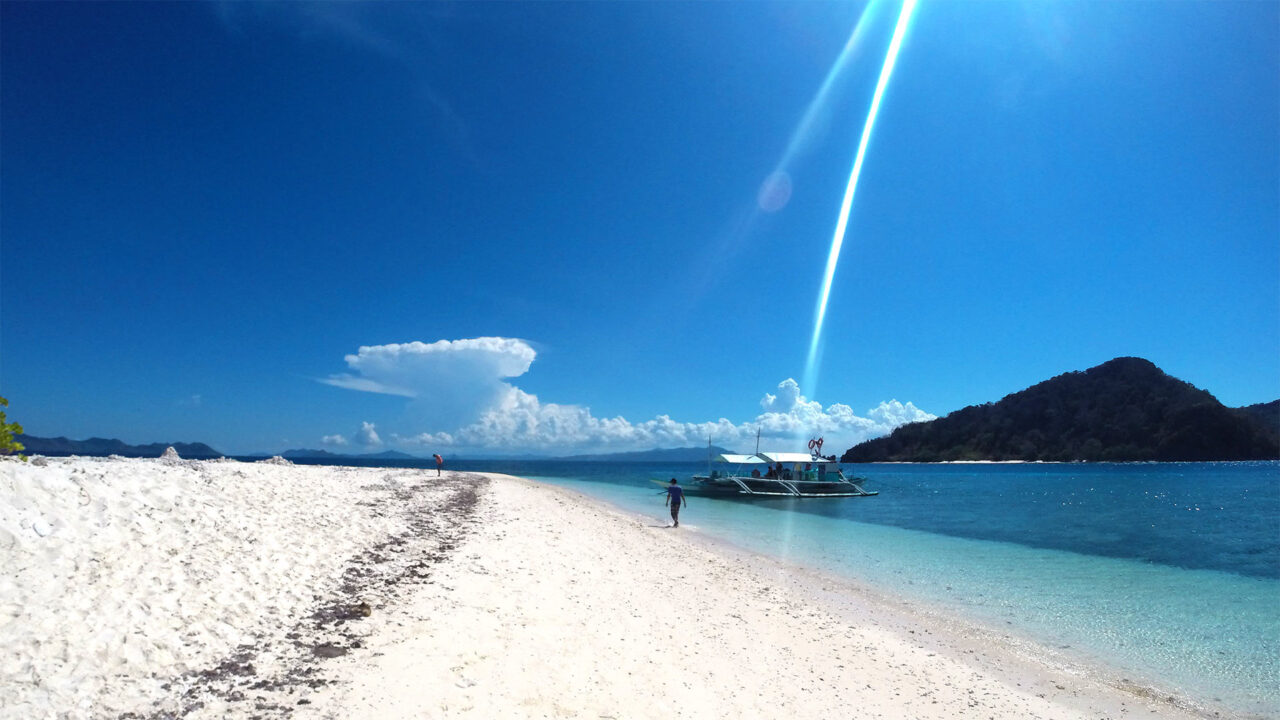
Linapacan and its beautiful neighboring islands
During the 16th century the Spanish sent missionaries to the Philippines, including one to Linapacan. When they landed on shore, they saw footprints, traced them and eventually came to a hut where a beautiful woman resided. She replied that her name was Pacan and they later discovered that she was the wife of the island’s chieftain. They thus named the island Reina Pacan, in honour of the beautiful queen, but which much later was renamed to Linapacan.
As mentioned before, the island has two towns, Kaseledan and San Miguel. A road was built between those two but it is now apparently too overgrown by the jungle and dilapidated to use. But you can rent a motorbike or mountain bike from BRC hotel to venture around or see how far you get.
San Miguel is the main town where the ferries stop, but in both the number of tourists is very few and the people are very friendly and curious. If you walk south from San Miguel along the water, you can get to the beach where the Japanese-Filipino tourist guide lives with his family in a small hut. He is a remnant of WWII and is always very happy to meet tourists. Across the water is Ili Island, home of the area’s million-years-old Seniora caves, where the guide will be happy to take you. If visiting the caves, make sure not to rest your hands on any of the stalagmites, as the salt from it will eventually wear it flat and take away its fine detail.
On the way to this beach you will pass a long stretch with huts propped up out of the mud on stilts, with long wooden sidewalks between them. Quite a fun community to explore and the locals will be tickled pink by your presence.
In the other direction from San Miguel you can follow the road towards two other small communities, with their own beaches. San Miguel itself has about five hotels and a restaurant, more details you can find here.
Across from San Miguel is Patoyo Island. It is a nice island to explore with lots of jungle trails. On the side closest to San Miguel there is a very long stretch of beach with an equally long stretch of beautiful corals to snorkel through. A tent camp was recently built there, but the owner is not very friendly and charges money to use his beach. From there you can hike over the hill to the next beach, heading east, to Henkey’s grocery shop. Great place to stop for lunch and they would be happy to direct you to their local, natural “swimming pool”, where there is also great snorkeling.
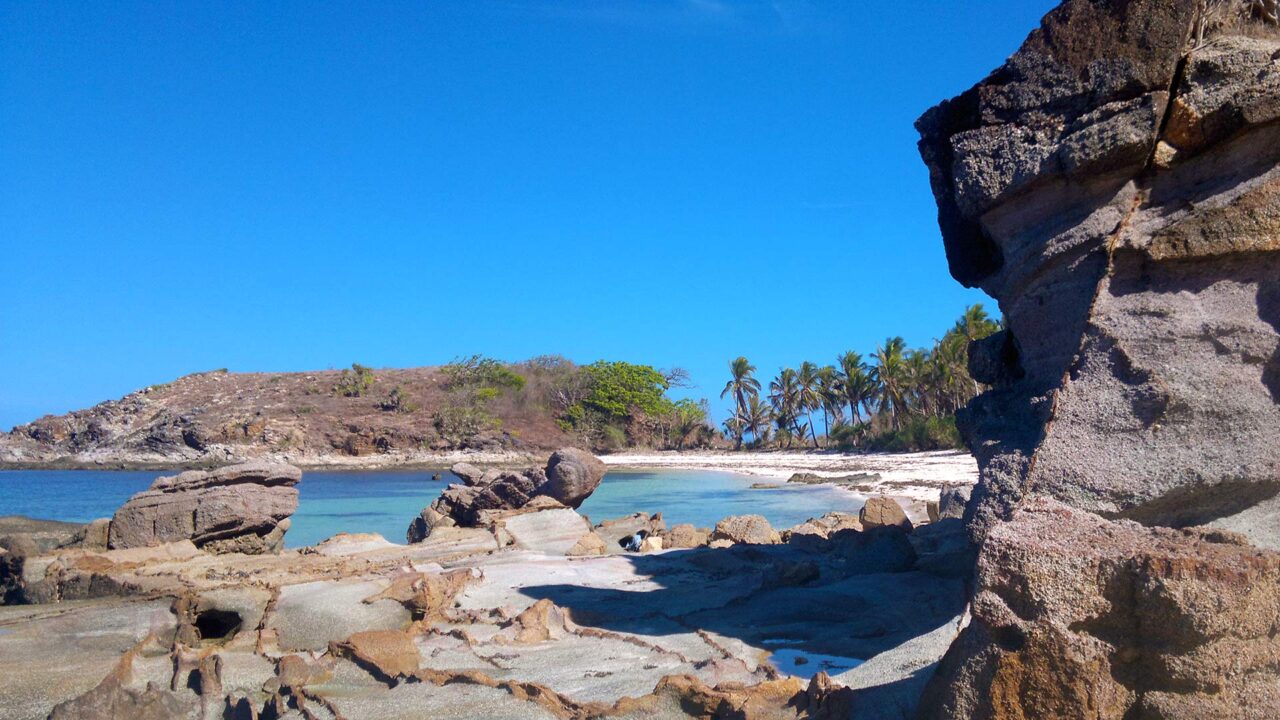
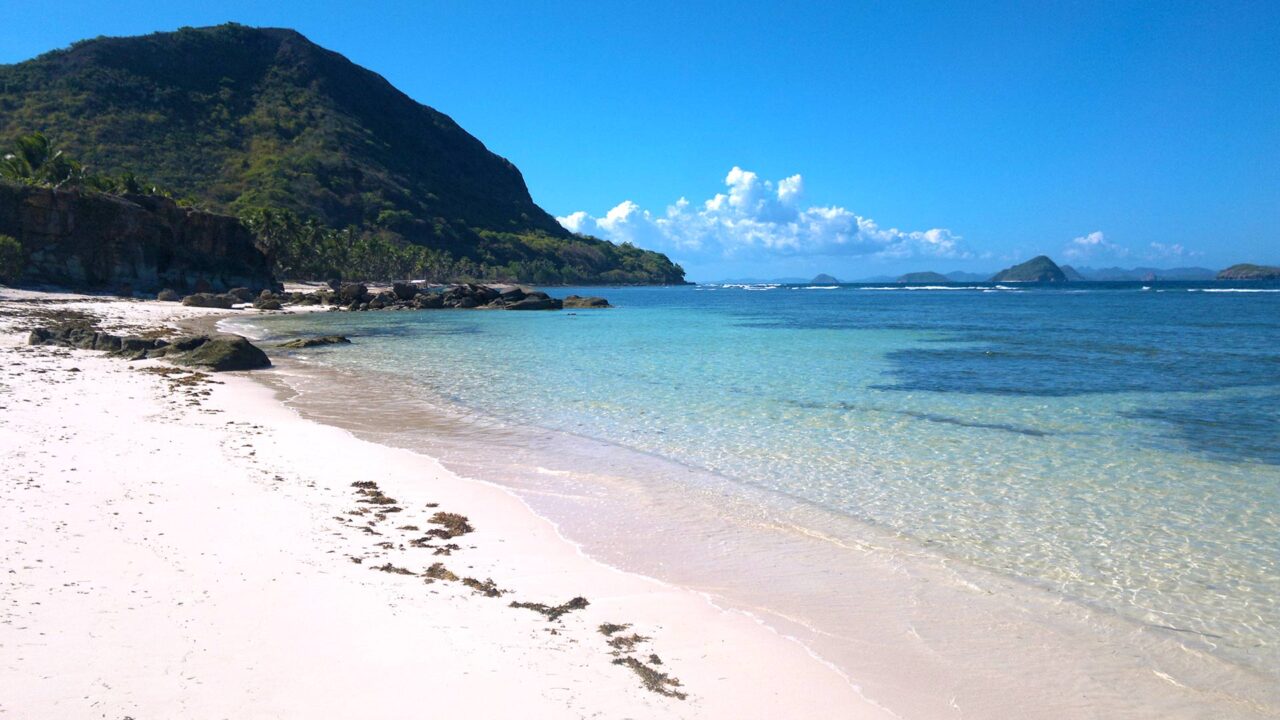
Continuing along the trail over the mountain ridge, you will find a great viewpoint at the top of it before continuing down to the other side, where there is a string of three beaches with lovely rock formations in between. Eventually you will get to the end of the last beach, where my boatman lives and who would be happy to act as your island’s guide. Such as up the steep hidden trail above his house to the island’s highest mountain.
There is also great snorkeling just offshore from our camp on Dimancal Island. Tao Expeditions often stop here. From our camp you can take a trail to the other side of the island, where there is another small fishing village and a very long stretch of deserted beach, with its own cute, little cemetery. But before you get to the other side, half way there we carved a jungle trail to the top of the island’s largest mountain and from where you can get a fantastic view of the area.
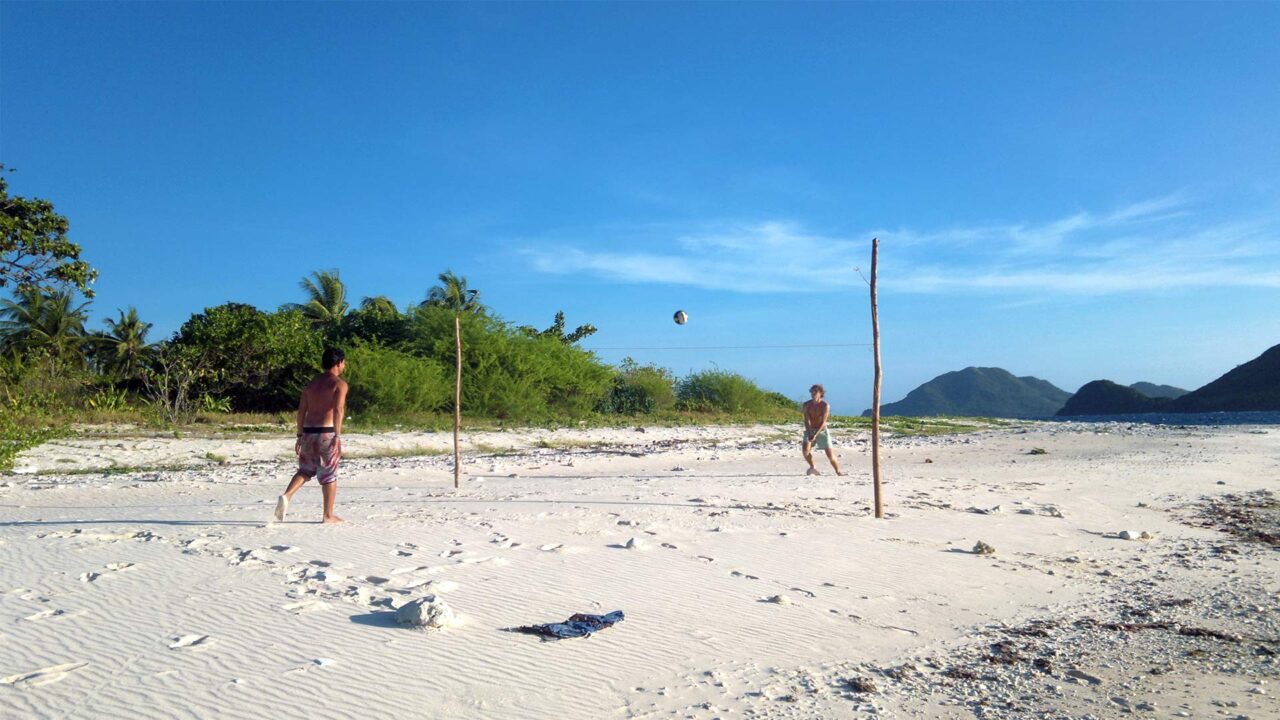

Across from our camp is Mangligad Island, with a little family hut on each side and more long beaches to explore, with an easy path to cross to the other side. Possibly the best snorkeling in the immediate area can be found on the other side, but best to arrange all that with a local boat tour, as it is hard to find.
Continuing further to Inapupan island, the locals are now calling it Turtle Island, because there are many there. Two of them can be occasionally seen floating off our beach as well, where they sometimes lay their eggs.
In the opposite direction from our island of Dimancal there is a small island in the open ocean called Debogso. It is my favorite island for snorkeling and exploring, including a steep climb up a grassy ridge which will take you to a tree jutting horizontally out from the hill and a great place to rest.
There is a very small beach on the end of it which has a small cave you can walk through. Quite a romantic place to camp on overnight. From the beach along the west side of the island, the snorkeling is very interesting because of the rock formations. It feels like you are a bird flying. Around the corner there are two inlets leading into the island, but the second one continues through a cave tunnel which will take you back to an opening at the beach. But be careful, because the rocks are jagged if the waves are too strong. Since the island is out in the open ocean, it can only be gotten to if the waves are calm enough.

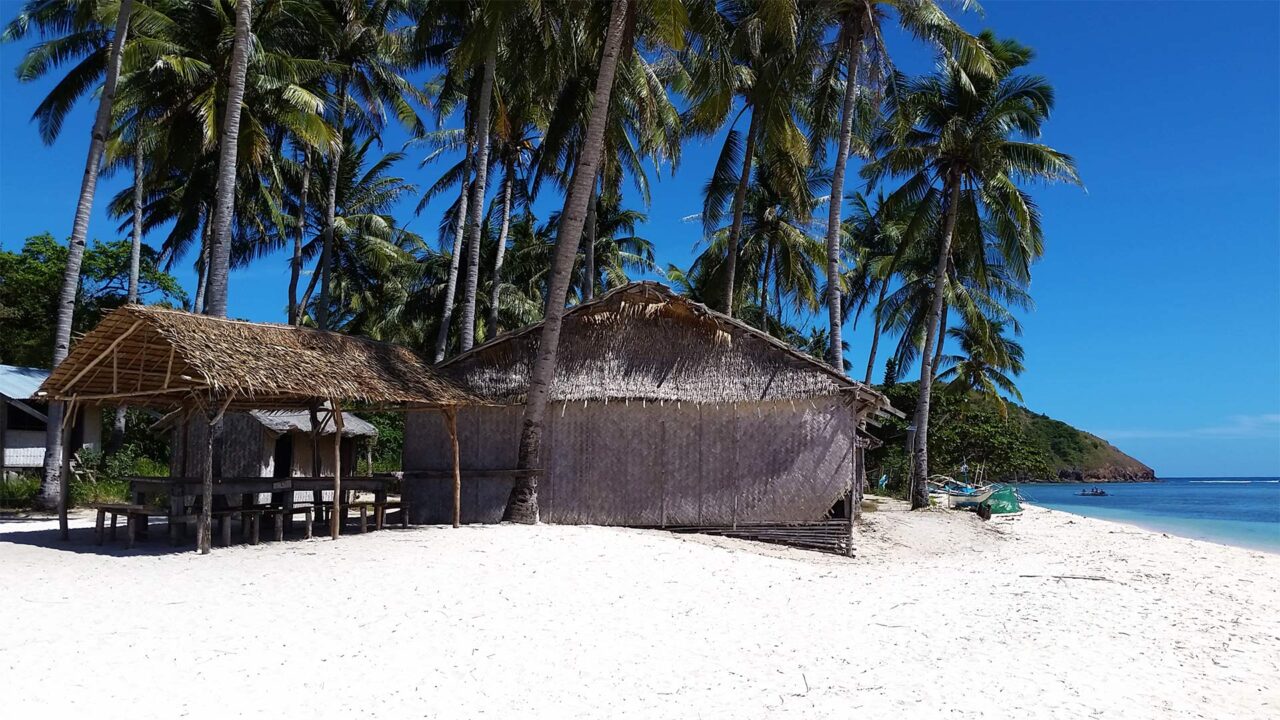
How I found this place
Many of my guests ask me how I found this remote little paradise, so here it goes.
Born in Prague, growing up in Canada, I eventually found myself in South East Asia and spent more than two years on the beautiful island of Koh Phangan in Thailand. But that not quite serving my cup of tea, I decided to hit the road on a motorbike and make my way across Asia as part of my life mission to visit a hundred countries before I die. Fortunately, my online job allowed this flexibility.
My 50th birthday was approaching, one which for a decade I planned to make a super party. Some friends suggested El Nido, I fell in love with pictures I found on the internet, but decided on a remote resort east of the town and settled for two months in the lovely archeological village of Sibaltan. It is here that I first thought of starting an island hopping service.
Through ebay I bought three portable, foldable, plastic solar panels handmade by a forest ranger in the U.S. and set out on a journey to hop my way from island to island. Most did not have any electricity, which I needed for my online income, but I was assured that there was a mobile signal for internet almost everywhere. My plan was to collect a database of homestays and fishermen to string together different routes and packages.
First destination, the lovely island of Iloc, in Pical. I stayed at the village captain’s hotel, always buzzing with activity, such as collecting the island’s daily fish catch or peeling cashews to send off to Manila. I asked about a guide to take me to the small community on the other side of the island, but he said it was so small it wasn’t worth it, but offered to take me to San Miguel, since he goes there every Monday to register his island’s fish earnings.


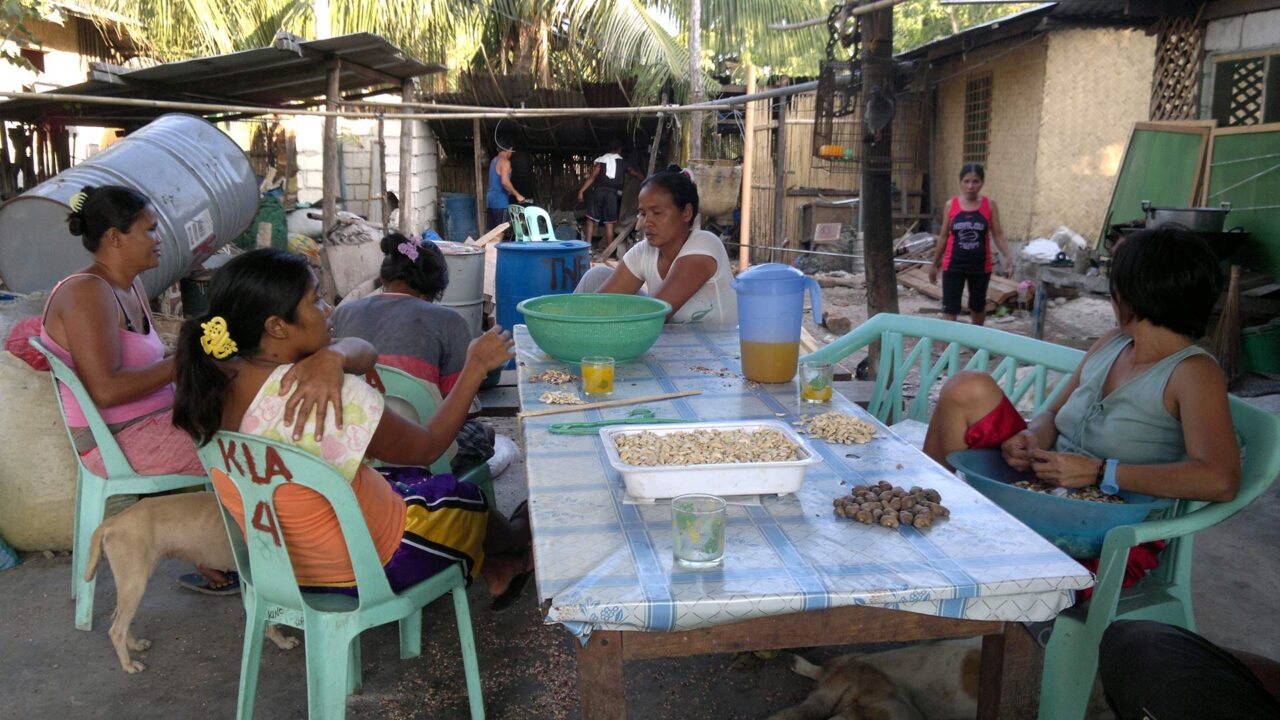
For two months I stayed in this town, using it as a base to explore the 52 islands in the Linapacan area. Eventually I learned that the owner of the hotel I was staying at owned some property on a nearby island. I worked out a deal with him and henceforth launched my long held dream, on Patoyo Island.
Unfortunately, his property was located on the other side of the island from the mobile signal tower and I had to catch 2G internet from a tower half way to Coron. I got into a routine of climbing over volcanic rock every day with my small motorcycle battery and laptop to get a few hours of high-speed internet, but that and other problems, such as the raging wind which ripped apart all my tents once the trade winds changed, forced me to consider abandoning this project.
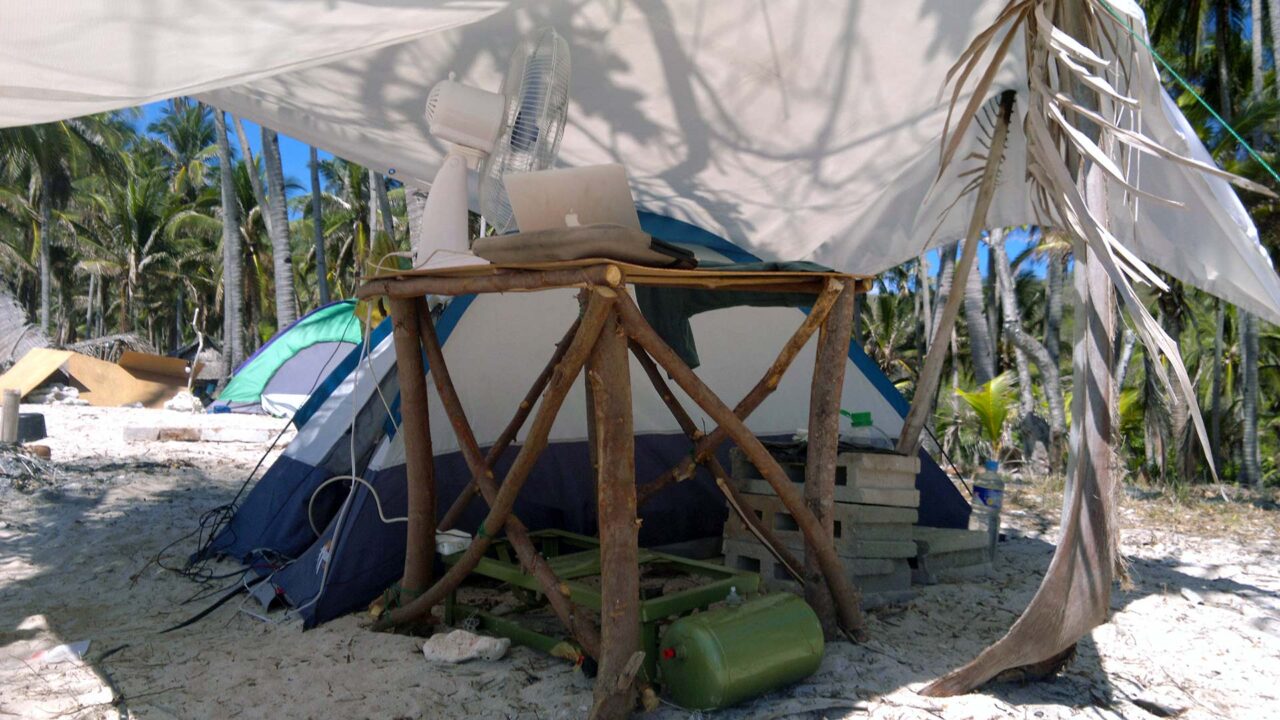
Fortunately, the owner also had a property on another island, where I am now. Often when new guests disembark from their little hired boat with a look of amazement on their face, I stretch out my arms and say, “Welcome, to the end of the world”. Or when emailing instructions how to get here, sometimes I’ll comment, “Hey, if you want to get to Shangri-La, sometimes you have to climb a few mountains”.
It really is Shangri-La out here and not the easiest place to get to, more suited for longer stays. But guests do make the effort, made easier by the boat tours I now organise between El Nido and Coron. It has become a rather successful business and my primary source of income for half of the year.
Come drop by and say hello!
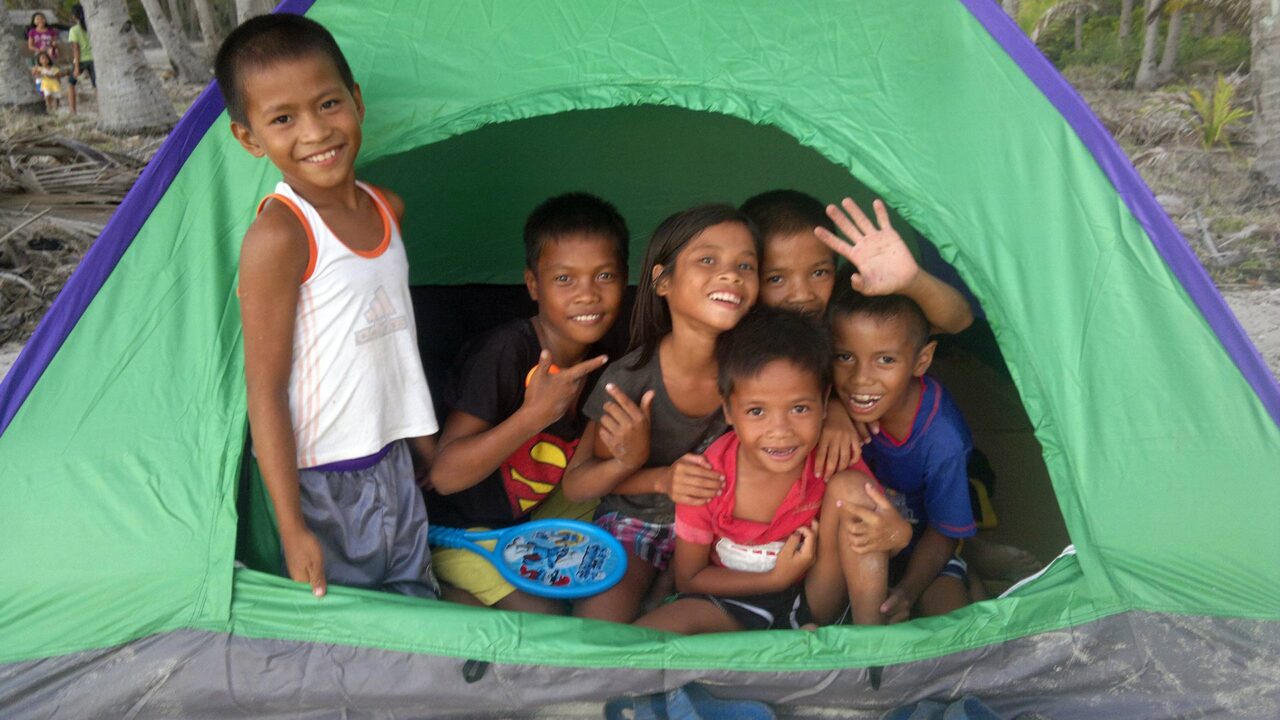
Book a tour to an untouched paradise!
How about a private custom boat tours between El Nido and Coron? Linapacan is a true gem in Palawan and a great adventure. Find out more here.
Have you ever heard of Linapacan? Or even been there yet? Let us know in the comments below.
Guest post by Karel Kosman from islandhoppinginthephilippines.com

Gast
This is a guest post. If you have any questions or suggestions on the topic, simply write them in the comments or contact the guest author directly on his/her blog.
I would love to explore Linapacan. Hope you can help
Inspiring. Thanks for sharing!
Hi Karel. We would love to drop by! I chanced upon your website while doing research for our coming boat trip. We are travelling from Boracay and heading to Maosonon via Manamoc. We were planning to make a stop in Ginto as a friend manages that. I’m hoping to get tips on the 8 best islands around Linapacan to visit. We would also prefer islands with camping facilities or huts. We are equipped to sleep on board but prefer to get a proper bed here and there. We are a group of Italians and Filipinos, 2 of them accomllished chefs. We have been doing this boat trips on our own for 8 years now and have covered El Nido, Busanga, Apo Reef, Western Mindoro, Romblon, Western Visayas, Bohol, Cebu and Leyte. We would certainly love to meet you and swap stories. Hoping to hear from you. Cheers. Paul
Nice post.Pictures are good.Content is also well written.Thanks for sharing this post with us.